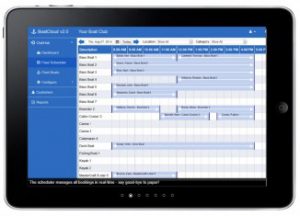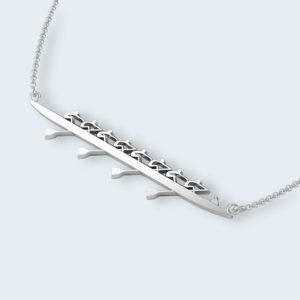It is interesting how themes occur in life and business. Today Ive had two enquiries from customers who own Dreher oars and sculls about how to check the pitch and remedy altered pitch.
First you have to check the wear on the sleeve of the blade. If it is very worn, its probably best to replace the sleeve rather than try and adjust the pitch on the spoon to compensate for wear. [OK to do in an emergency for a short period but as wear continues the new pitch will soon be off].
If the sleeve is alright, then it is possible the spoon has slipped. Dreher oars and sculls are assembled using hot melt glue, not expoxy resin. This means that when heated, the glue melts and the spoon can be re-positioned. As the glue cools it hardens again. [most other oar manufacturers do not use hot melt].
Dreher UK sells its oars and sculls at 0 degrees pitch. If youve bought from us, this should be standard specification.
Checking and Adjusting Pitch
Materials needed:
- Pitch meter (digital)
- *If adjustment is necessary, you will also need
- Industrial heat gun or blowtorch
- Aluminum foil
Due to the high stresses associated with rowing, it is possible that the blade pitch may shift slightly. If you suspect that the pitch of your oars is not at 0 degrees, checking the pitch can be done easily, using a short piece of 2x 4 board on a flat surface or if you have built an oar fixture (instructions for building a solid oar fixtureuseful for clubs / schools with a fleet of oars). BTW forthe solid metal plate a foot stretcher plate does nicely!
Step 1: Place a short piece of 2 x 4 (i.e., 12 – 18 inches long) on a flat surface. Set your pitch meter to zero degrees on the 2 x 4 reference surface. Place the blade of the oar on the 2 x 4 with the tip of the blade extended 2.5 to 3 inches (~7cm) from the center of the board. The spoon should be face down with the convex surface uppermost. The centerline of the shaft should be 90 degrees to the orientation of the 2 x 4 reference board. Place your pitch meter on the flat part of the sleeve adjacent to the button on the spoon side of the button and observe the reading. We recommend adjusting the pitch for any reading greater than 0.3 degrees.
Step 2: If the pitch needs adjustment, you will need to melt the glue bonding the blade to the shaft. If you will be using a blowtorch, first wrap a strip of aluminum foil (about 3-4 wide) around the shaft near the blade in order to avoid scorching the carbon. If you have access to an industrial heat gun, the aluminum foil will not be necessary. Heat evenly around the shaft and avoid heating the spoon. When the glue is melted sufficiently, place the pitch meter back on the sleeve and twist the shaft until you obtain a 0 degree reading. Leave to cool. Re-check measurement when cool.







